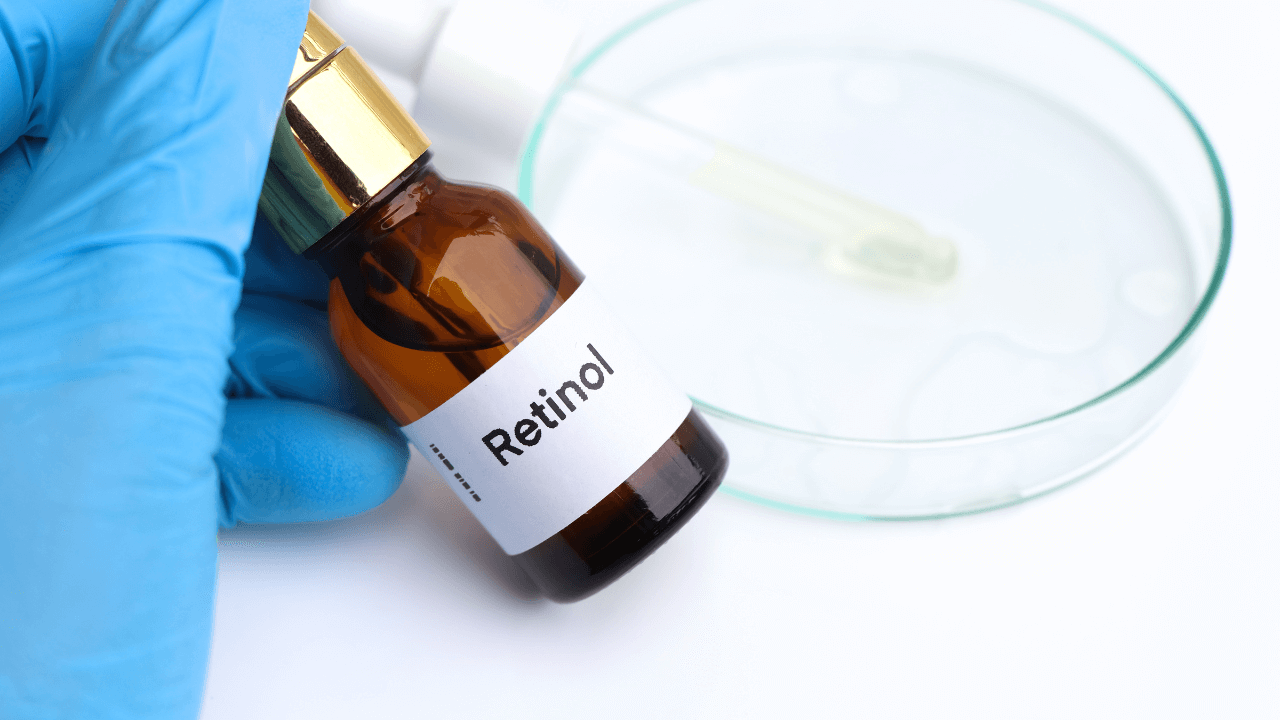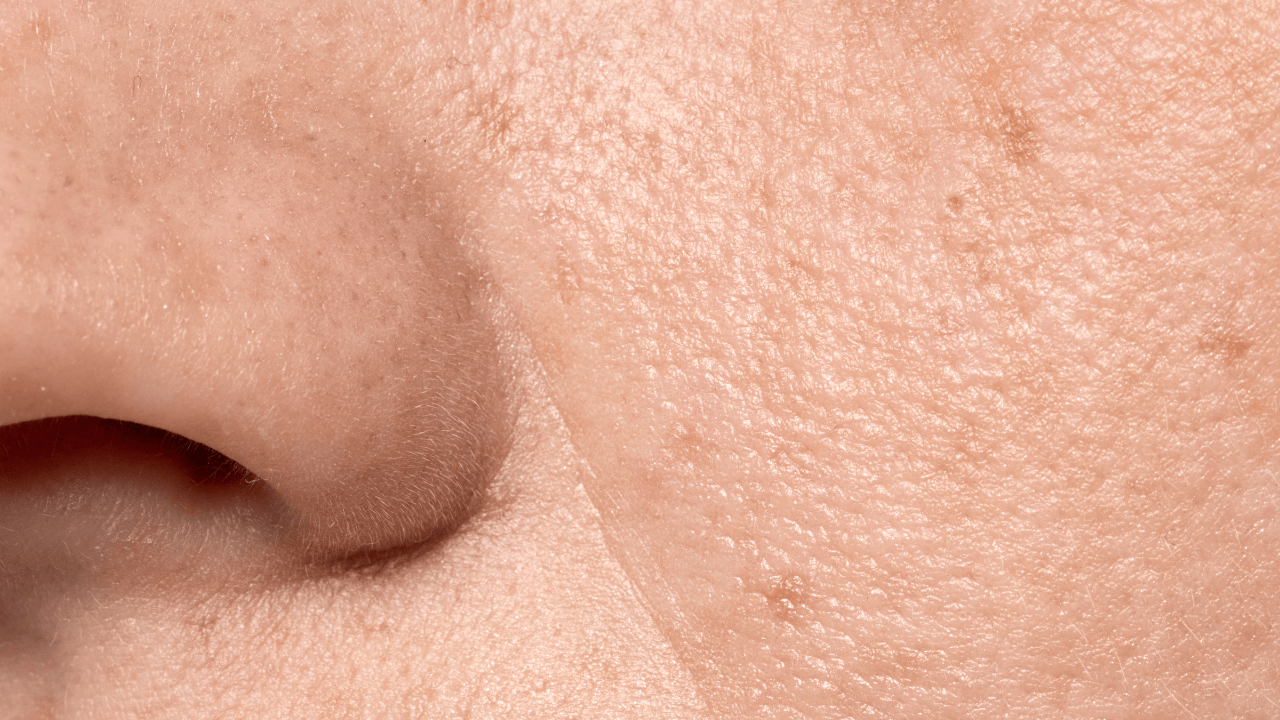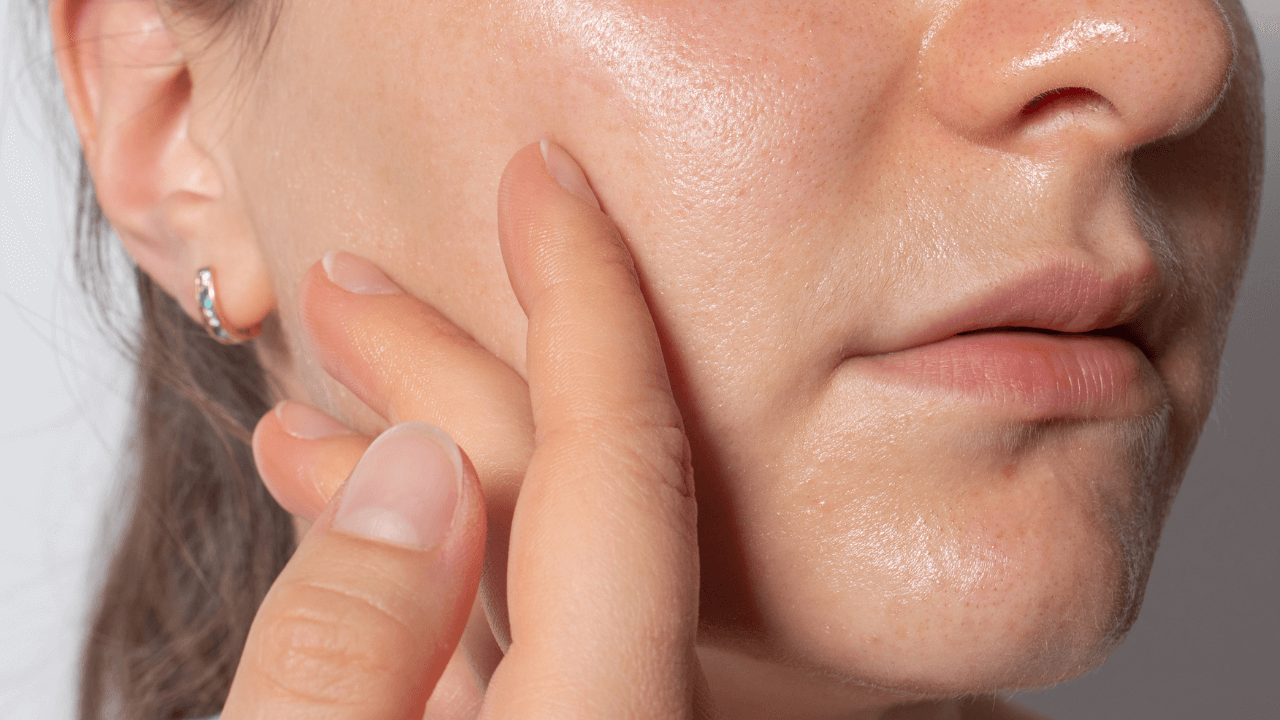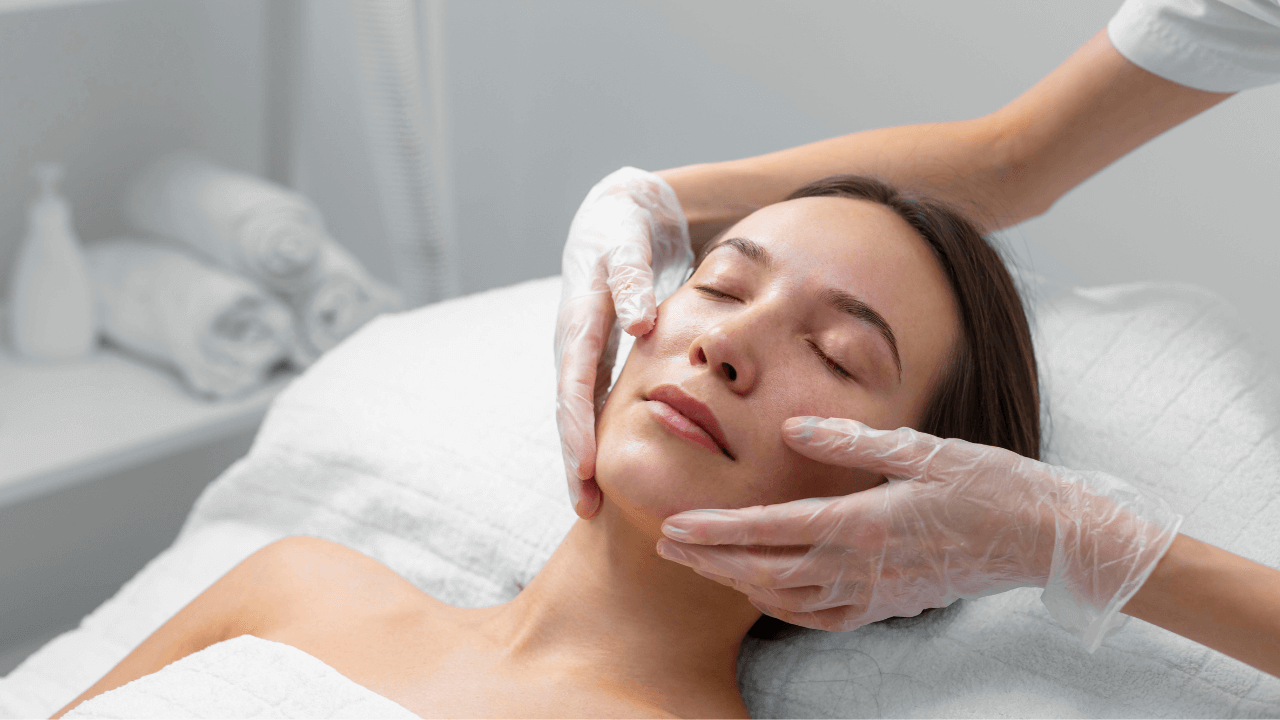Understanding Retinol: The Transformative Power of Vitamin A Derivatives
Retinol stands as one of dermatology's most scientifically validated ingredients, earning its reputation as the gold standard for addressing multiple skin concerns simultaneously. As a derivative of vitamin A, retinol belongs to a family of compounds called retinoids that fundamentally alter skin cell behavior at a molecular level. Unlike many skincare ingredients that work primarily on the skin's surface, retinol penetrates to the deeper dermal layers where it influences cellular function, genetic expression, and structural proteins – creating comprehensive, long-lasting improvements in skin health and appearance.
The transformative potential of retinol lies in its ability to communicate directly with skin cells through specialized receptors, essentially "reprogramming" them to behave like younger, healthier versions of themselves. This unique mechanism of action explains why retinol continues to be the cornerstone of effective anti-aging skincare despite decades of new ingredient innovations. While its benefits are well-established, understanding how to properly integrate retinol into your skincare routine requires knowledge of its various forms, appropriate concentrations, and techniques for minimizing potential side effects.

The Science Behind Retinol's Skin-Transforming Effects
At its core, retinol works through a fascinating multi-step conversion process within the skin:
-
Penetration and Conversion: When applied topically, retinol molecules penetrate through the skin's surface layer (stratum corneum) and enter living skin cells. Inside these cells, retinol undergoes a two-step enzymatic conversion process:
-
First, it converts to retinaldehyde (retinal)
-
Then, it transforms into retinoic acid, the biologically active form
-
Receptor Activation: Retinoic acid binds to two types of nuclear receptors within skin cells – Retinoic Acid Receptors (RARs) and Retinoid X Receptors (RXRs). This binding activates these receptors, which then function as transcription factors.
-
Gene Expression Modification: The activated receptors travel to the cell nucleus and bind to specific DNA sequences known as Retinoic Acid Response Elements (RAREs), which trigger changes in gene expression. These modifications affect hundreds of genes involved in skin cell growth, differentiation, and structural protein production.
Through this sophisticated cellular mechanism, retinol influences virtually every aspect of skin function and health:
Accelerated Cell Turnover and Renewal
Retinol dramatically increases the rate at which new skin cells are created in the basal layer and move to the surface:
-
Normal skin: Complete turnover cycle takes approximately 28 days in young adults and can slow to 40-60+ days with age
-
Retinol-treated skin: Turnover cycle accelerates to 14-21 days, similar to that of much younger skin
This accelerated renewal process has multiple benefits:
-
Prevents the buildup of dead cells that create a dull appearance
-
Reduces the formation of clogs in pores that lead to acne
-
Creates a smoother surface texture by eliminating rough patches
-
Helps fade hyperpigmentation by accelerating the shedding of pigmented cells
Enhanced Collagen Production and Preservation
Collagen, the primary structural protein that gives skin its firmness and elasticity, experiences significant improvements through multiple retinol-mediated pathways:
-
Increased Synthesis: Retinol stimulates fibroblasts (the cells responsible for collagen production) to create new collagen fibers. Studies show up to a 38% increase in collagen production after 6 months of retinoid use.
-
Inhibited Breakdown: Retinol suppresses matrix metalloproteinases (MMPs), the enzymes that break down existing collagen. This dual-action approach both builds new collagen and preserves what you already have.
-
Improved Organization: Beyond just increasing quantity, retinol helps organize collagen fibers into more effective structural lattices, improving skin's resilience and strength.
Research using biopsy samples has demonstrated measurable thickening of the dermal layer after consistent retinol use, directly correlating with visible reductions in fine lines and wrinkles.
Normalization of Melanin Production
Retinol helps regulate melanin, the pigment responsible for skin color and dark spots:
-
Inhibits tyrosinase, the key enzyme in melanin production
-
Accelerates the removal of existing hyperpigmented cells through increased turnover
-
Disperses melanin granules more evenly throughout the skin
-
Prevents inflammatory hyperpigmentation by moderating the skin's response to irritation
These effects make retinol particularly effective for addressing melasma, post-inflammatory hyperpigmentation, and sun damage—often showing visible improvement within 8-12 weeks of consistent use.
Regulation of Sebum Production and Composition
For those with acne or oily skin concerns, retinol offers significant benefits by:
-
Normalizing oil gland function by reducing excess sebum production
-
Altering the composition of sebum to be less likely to cause clogs
-
Preventing the abnormal keratinization (hardening of skin cells) that leads to blocked pores
-
Decreasing inflammation associated with acne lesions
-
Enhancing penetration of other acne treatments like benzoyl peroxide or salicylic acid
Clinical studies have shown 70-80% reduction in inflammatory acne lesions after 12 weeks of retinoid treatment, making it a cornerstone of comprehensive acne management.
Types of Retinoids: Understanding the Vitamin A Family
The vitamin A family includes multiple derivatives with varying strengths and benefits:
Over-the-Counter Options
Retinol: The most common non-prescription form, retinol requires two conversion steps to become active retinoic acid. This makes it gentler than prescription options but still highly effective with consistent use. Typical concentrations range from 0.01% to 1.0%.
Retinaldehyde (Retinal): Only one conversion step away from retinoic acid, retinaldehyde offers greater potency than retinol with less irritation than prescription retinoids. Studies show it's approximately 11 times stronger than retinol. Typical concentrations range from 0.05% to 0.1%.
Retinyl Esters (Retinyl Palmitate, Retinyl Acetate, Retinyl Propionate): These require three conversion steps, making them the gentlest but least potent option. Ideal for very sensitive skin or retinoid beginners. Effectiveness requires higher concentrations and longer use periods.
Granactive Retinoid (Hydroxypinacolone Retinoate): A newer generation retinoid that binds directly to retinoid receptors without conversion. Offers prescription-like benefits with minimal irritation. Growing research supports its effectiveness at concentrations of 0.1-0.5%.
Prescription-Strength Options
Tretinoin (Retinoic Acid): The active form that requires no conversion, making it 20 times more potent than retinol. Available by prescription in concentrations from 0.01% to 0.1%.
Adapalene: A third-generation synthetic retinoid specifically designed for acne treatment. Now available over-the-counter (0.1%) and by prescription (0.3%). Shows excellent efficacy with less irritation than tretinoin.
Tazarotene: The most potent prescription retinoid, particularly effective for psoriasis and severe acne. Associated with higher levels of irritation but potentially faster results.
Trifarotene: The newest prescription retinoid, specifically designed to target retinoic acid receptor-gamma (RAR-γ), which is the most common retinoic acid receptor in the skin. Approved for facial and body acne.
Strategic Implementation: How to Successfully Incorporate Retinol
Successful retinol use requires a strategic approach to maximize benefits while minimizing potential irritation:
Starting and Building Tolerance
The key to retinol success lies in a gradual introduction:
-
Select Appropriate Starting Strength:
-
For sensitive skin: Begin with retinyl esters or 0.01-0.03% retinol
-
For normal skin: Start with 0.025-0.05% retinol
-
For resilient skin: Begin with 0.05-0.1% retinol
-
Initiate with Buffer Technique:
-
Apply pea-sized amount of retinol after moisturizer has dried (not before)
-
This "buffering" technique allows the moisturizer to act as a protective barrier
-
Start with application once or twice weekly, with at least 2-3 days between uses
-
Implement Strategic Timeline:
-
Weeks 1-4: Apply once or twice weekly
-
Weeks 5-8: Increase to every other night if no significant irritation
-
Weeks 9-12: Advance to nightly use if tolerated
-
After 3-6 months: Consider increasing concentration if desired
-
Monitor for Retinization Signs:
-
Mild redness, dryness, and occasional flaking are normal
-
Stinging, burning, or significant irritation signals need to reduce frequency
-
"Retinoid uglies" (temporary dryness/flaking) typically peak at 2-4 weeks before improving
Optimal Application Techniques
For maximum effectiveness and minimal irritation:
-
Evening Application Only: Apply retinol at night, as UV exposure can degrade the molecule and reduce efficacy. Additionally, retinol can increase photosensitivity.
-
Proper Cleansing: Begin with thoroughly cleansed skin, waiting 15-20 minutes after washing to ensure skin is completely dry (moisture can increase irritation).
-
Correct Amount: Use a pea-sized amount for the entire face—more is not better and increases irritation risk.
-
Application Strategy:
-
Apply in dots across forehead, cheeks, and chin
-
Gently spread using upward motions
-
Avoid direct application to eyelids, corners of nose, and lip areas
-
For eye area, residual product from fingertips provides sufficient treatment
-
Wait Time: Allow 15-30 minutes before applying other products to ensure proper absorption and conversion.
Compatible and Incompatible Ingredients
Understanding ingredient interactions maximizes retinol benefits:
Beneficial Combinations:
-
Hyaluronic Acid: Provides hydration that counteracts dryness without interfering with retinol function
-
Niacinamide: Strengthens skin barrier and reduces potential irritation; studies show enhanced results when combined with retinol
-
Ceramides and Fatty Acids: Support barrier repair and minimize sensitivity
-
Peptides: Work through different pathways to enhance collagen production
-
Antioxidants (except vitamin C): Provide complementary protection against free radical damage
Problematic Combinations (use at different times):
-
Alpha and Beta Hydroxy Acids (AHAs/BHAs): Can cause excessive irritation and may alter retinol's pH, reducing effectiveness
-
Vitamin C (L-ascorbic acid): Functions optimally at different pH levels; combining may reduce efficacy of both
-
Benzoyl Peroxide: Can oxidize and inactivate retinol molecules
-
Other Retinoids: Provides no additional benefit but increases irritation risk
-
Chemical Exfoliants: Creates high risk of barrier damage and irritation
Seasonal and Environmental Adjustments
Adapt your retinol routine to environmental conditions:
-
Summer Usage: Consider reducing frequency during high-UV seasons, focusing on diligent sunscreen application (minimum SPF 30, reapplied every 2 hours when outdoors)
-
Winter Adjustments: Increase hydration through additional moisturizer layers or hyaluronic acid serums to combat seasonal dryness
-
Travel Considerations: When visiting drastically different climates, temporarily reduce frequency until skin acclimates to new conditions
-
Procedure Timing: Discontinue retinol 5-7 days before and after procedures like chemical peels, microdermabrasion, or laser treatments
Timeline of Expected Results and Clinical Evidence
Understanding the typical progression helps maintain realistic expectations:
Week 1-4: Initial Adjustment Phase
-
Possible mild redness, dryness, and flaking (retinization process)
-
Some users may experience purging of existing clogs (appearing as breakouts)
-
Subtle improvements in skin texture may begin
Weeks 4-8: Early Visible Improvements
-
Noticeable reduction in pore appearance
-
Improved skin texture and smoothness
-
Beginning stages of acne reduction
-
Initial fading of superficial hyperpigmentation
Weeks 8-12: Significant Changes
-
Visible reduction in fine lines, particularly around eyes
-
Substantial improvement in acne for most users
-
More even skin tone with continued fading of dark spots
-
Enhanced clarity and brightness
Months 3-6: Progressive Transformation
-
Deeper wrinkles begin to show improvement
-
Significant reduction in hyperpigmentation
-
Noticeable increase in firmness and elasticity
-
Overall more refined skin texture and tone
6+ Months: Long-Term Structural Changes
-
Substantial improvement in dermal thickness
-
Reorganization of collagen fiber structure
-
Visible reduction in even deeper wrinkles
-
Continued gradual improvement in all parameters
Clinical studies demonstrate that while some benefits appear quickly, the most significant structural changes require 6-12 months of consistent use. Research using skin biopsies has confirmed up to 80% increase in collagen production and a measurable thickening of the dermal layer after long-term retinoid use.
Addressing Special Considerations and Challenges
Sensitive Skin Approaches
For those with reactive or sensitive skin:
-
Retinol Alternatives: Consider gentler options like granactive retinoid or bakuchiol (a plant-derived compound with retinol-like effects but minimal irritation)
-
Short-Contact Therapy: Apply retinol for 20-30 minutes before washing off; gradually increase time as tolerance builds
-
Sandwich Method: Apply moisturizer, then retinol, then another layer of moisturizer to minimize direct contact with skin while still allowing penetration
-
Moisture Barrier Support: Use dedicated barrier-repair ingredients (ceramides, fatty acids, cholesterol) in the morning to strengthen skin resilience
Addressing Common Side Effects
Dryness and Flaking:
-
Increase hydration with hyaluronic acid serums
-
Layer rather than switch to heavier creams
-
Consider overnight hydrating masks 1-2 times weekly
-
Avoid harsh cleansers that further strip the skin
Persistent Redness:
-
Reduce frequency of application
-
Increase buffer with moisturizer
-
Look for formulations containing anti-inflammatory ingredients
-
Consider switching to a gentler retinoid form
Purging vs. Irritation:
-
Purging: Occurs in areas you typically break out; small, uniform blemishes that resolve quicker than normal
-
Irritation: Occurs in unusual locations; includes burning, excessive redness, or widespread tiny bumps
Pregnancy and Breastfeeding Considerations
Current medical guidelines recommend avoiding retinoids during pregnancy and breastfeeding due to theoretical risks, though topical absorption is minimal. Alternatives during this period include:
-
Bakuchiol (plant-derived retinol alternative)
-
Peptide-based products for collagen support
-
Niacinamide for brightening and barrier support
-
Azelaic acid (pregnancy-safe) for acne and pigmentation
-
Vitamin C for antioxidant protection and brightening
Always consult with a healthcare provider regarding specific pregnancy and breastfeeding recommendations.
Retinol Product Selection Guide
When choosing a retinol product, consider these key factors:
Delivery System and Formulation
Encapsulated Technology: Look for products utilizing liposomal or microsphere encapsulation, which protects the retinol molecule until it penetrates the skin, improving both stability and reducing irritation potential.
Time-Release Formulations: These deliver retinol gradually over several hours, maximizing effectiveness while minimizing irritation.
Vehicle Type:
-
Creams: Best for normal to dry skin, providing additional hydration
-
Serums: Higher concentration of active ingredients, suitable for normal to oily skin
-
Oils: Gentler delivery system, ideal for sensitive or very dry skin
-
Gels: Lightweight and non-comedogenic, excellent for acne-prone skin
Supporting Ingredients
The most effective retinol products contain complementary ingredients:
Barrier Support: Ceramides, fatty acids, and cholesterol help maintain skin integrity during the adjustment period.
Anti-Inflammatory Additions: Licorice extract, centella asiatica, and bisabolol can minimize redness and irritation.
Hydration Boosters: Hyaluronic acid, glycerin, and squalane provide essential moisture without clogging pores.
Antioxidant Protection: Ingredients like resveratrol, green tea extract, and vitamin E enhance protective benefits and stability.
Packaging and Stability
Retinol is highly unstable and degrades when exposed to light, air, and heat. Prioritize products in:
-
Opaque, airless pump containers
-
Aluminum tubes that protect from light
-
Individual single-dose capsules or ampoules
-
Products stored in the refrigerator have extended shelf life
The Future of Retinoid Technology
The retinoid landscape continues to evolve with promising innovations:
Next-Generation Retinoids: Synthetic retinoids being developed with receptor-specific targeting for enhanced efficacy with reduced irritation.
Combination Delivery Systems: Emerging technologies combining retinoids with complementary ingredients in multi-chamber or sequential-release systems for optimized results.
Personalized Formulations: Increasing availability of custom retinoid products adjusted for individual skin concerns, sensitivity levels, and environmental factors.
Advanced Stabilization: New molecular modifications and encapsulation technologies extending retinoid shelf-life and reducing degradation during use.
Conclusion: The Enduring Value of Retinol in Skincare
After decades of scientific research and clinical use, retinol remains the benchmark against which all other anti-aging ingredients are measured. Its unique ability to fundamentally change skin cell behavior creates comprehensive improvements that address multiple skin concerns simultaneously. While newer ingredients continuously enter the market with promising claims, few can match retinol's well-documented capacity to transform skin structure and function at the cellular level.
The key to success with retinol lies not in finding a miraculous overnight solution, but in committing to a strategic, consistent approach that respects your skin's adaptation process. By understanding the science behind this remarkable ingredient and implementing it with patience and proper technique, you harness one of dermatology's most powerful tools for maintaining healthy, youthful skin throughout your lifetime.
When used correctly, retinol doesn't just improve your skin's appearance—it fundamentally changes how your skin functions, creating lasting benefits that continue to develop and improve over time. This makes it not merely a treatment, but an investment in your skin's long-term health and appearance.





